This week I have one more problem from Milan Vukcevich for you. This one was published in Chess Life magazine in 1986. It later won first prize in the tourney. It caught my eye when the award was published, and it was one of the problems that got me interested in composing in the first place. The diagram calls for mate in eight:
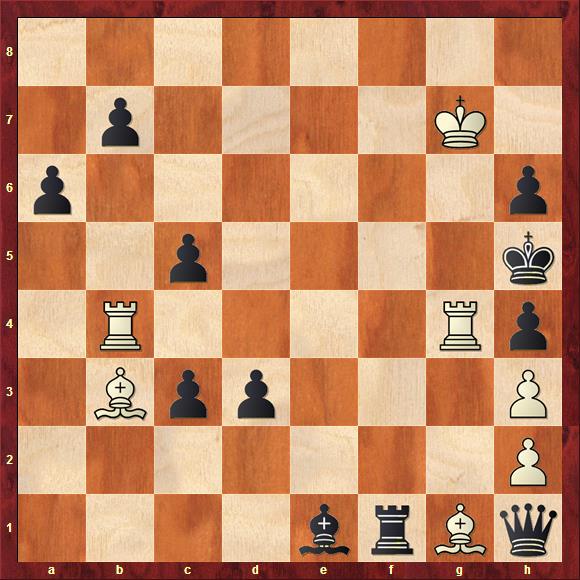
Loyal readers of this series might remember the term “Nowotny.” It is one of the main interference themes employed by problem composers. A Nowtony occurs when one side plays a move that simultaneously interferes with two line pieces, usually the rook and bishop, from the other side. As an offensive maneuver, a Nowotny typically leads to a double threat. When the defending side captures the interfering piece with one of his line pieces, the other line piece remains interfered with. When played as a defensive maneuver, it can often defeat a double threat.
Don't worry if you're unclear on the notion, since this problem has a lot of them!
Let's look at the diagram. White is considerably outgunned. He plainly has no time for slow maneuvering, since once black gets active white will not long survive, let alone give mate in eight moves. So white must act quickly.
The key is the Nowotny move 1. Bf2!. By interfering with the black rook on f1, white introduces the threat of 2. Bf7 mate. And by interfering with the black bishop on e1, white introduces the more subtle threat of 2. Rxh4+ Kg5 3. Rbg4+ Kf5 4. Rh5 mate. Notice that the white bishop on b3 covers the e6 square.
What is black to do? Capturing the bishop with either his rook or bishop will defeat one of the threats, but will nonetheless leave black helpless against the other. Instead he needs a defense that defeats both threats. And he has one!
Black plays a Nowotny of his own: 1. ... c4
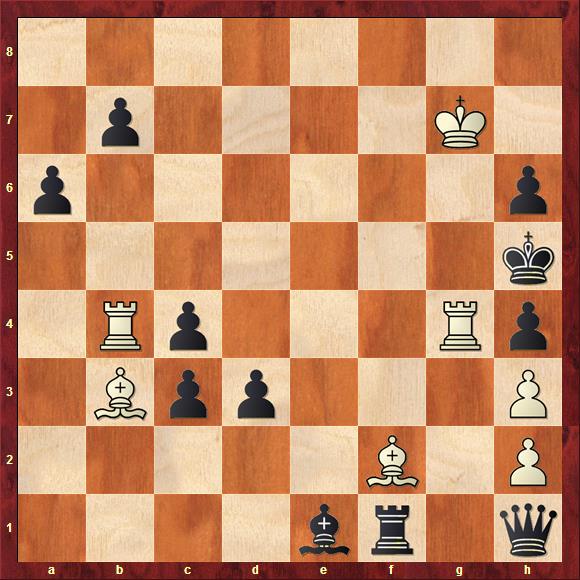
Boom! Your move white.
OK, let's assess. We plainly need some new threats. So white plays 2. Rb6 which threatens the simple 3. Rxh6 mate.
Now, black certainly has dramatic defenses like 2. ... Qc6. But white still has a lot of moves to burn, so he will just win prosaically with 3. Rxc6. A possible line is 3. ... bxc6 4. Bxc4 Rxf2 5. Bxd3 Rf6 6. Kxf6 and black has run out of pieces to sacrifice faster than white has run out of moves.
So the only serious defense is 2. ... Bd2, covering h6. White continues with 3. Ba4. This threatens 4. Be8 mate. This time the only defense worth considering is 3. ... Re1. Here is the position:
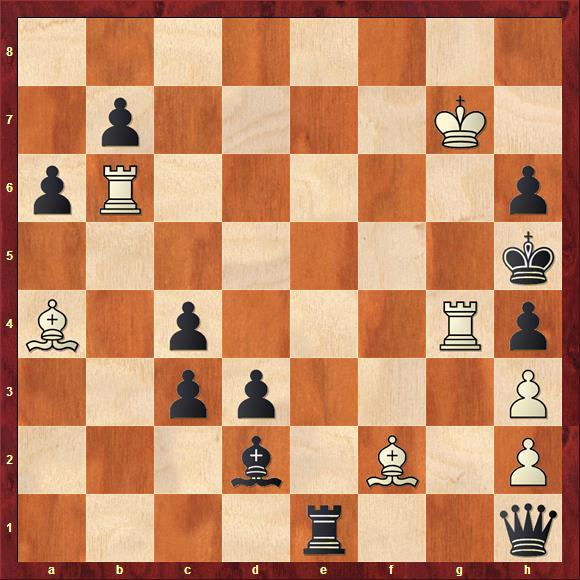
Black still seems to have everything under control. But now white can renew his threats with the Nowotny move 4. Be3!. But black can still hold it together with a Nowotny of his own: 4. ... Qc6!
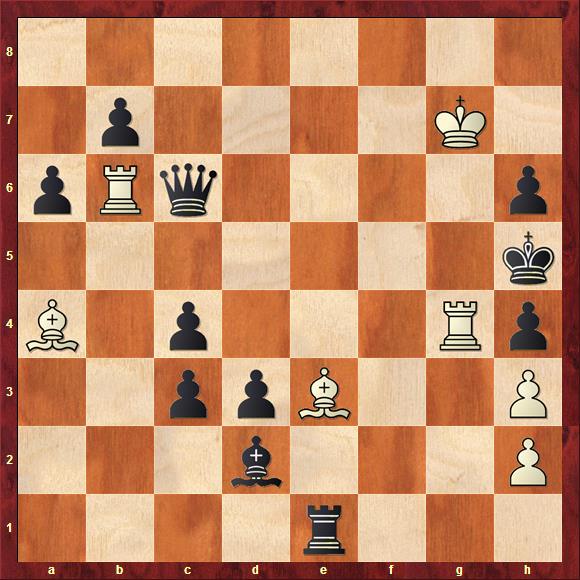
Boom again! Only four moves left, white.
Time for white to change gears. If the interferences aren't getting it done, then let's just sacrifice three of our four pieces. White continues with 5. Rg5+ hxg5 6. Bxc6:
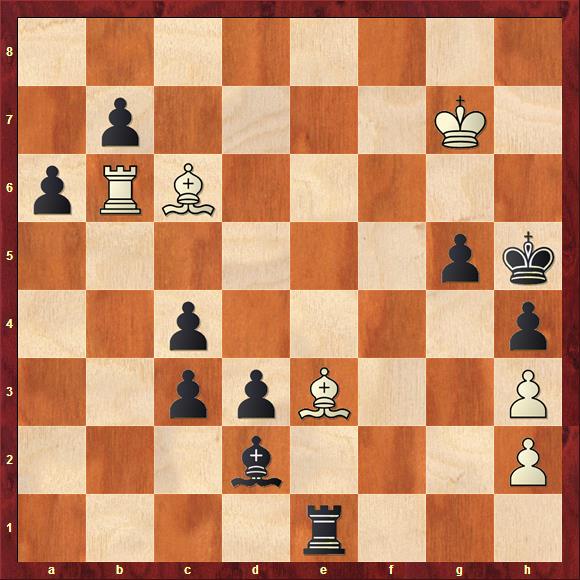
Black cannot play 6. bxc6 since after 7. Rxc6, black is helpless against 8. Rh6 mate on the next move. So black tries 6. ... Rxe3, but this only delays the inevitable. The problem concludes with 7. Be8+ Rxe8 8. Rh6 mate

Not so smug now, are you black?
I think this definitely falls into the how do you compose such a thing category.
See you next week!

Very cool! My chess program took a long time to find 1 Bf2 (though it assessed 1 Rg6 as winning), and considered 1 ... Qf3 to be better than 1 ... c4 (though it should be noted that after 1 ... c4 it instantly found the mate).
I'm not sure that I could ever even aspire to find this sort of thing over the board.
What a stunner. All the way through. In some ways very "real-game-like" since it emphasizes the "trapped-king's a very bad thing" nature of a lot of real-game tactical play.
In his commentary to this problem, Vukcevich comments that it straddles the line between an endgame study and a direct mate problem. The unrealistic nature of the position keeps it in direct mate territory, in my opinion.
My computer also had a hard time with this one. It finds Bf2 quickly but describes it as mate in nine. I didn't give it all that much time to think, though.
Creating the world's new chess capital